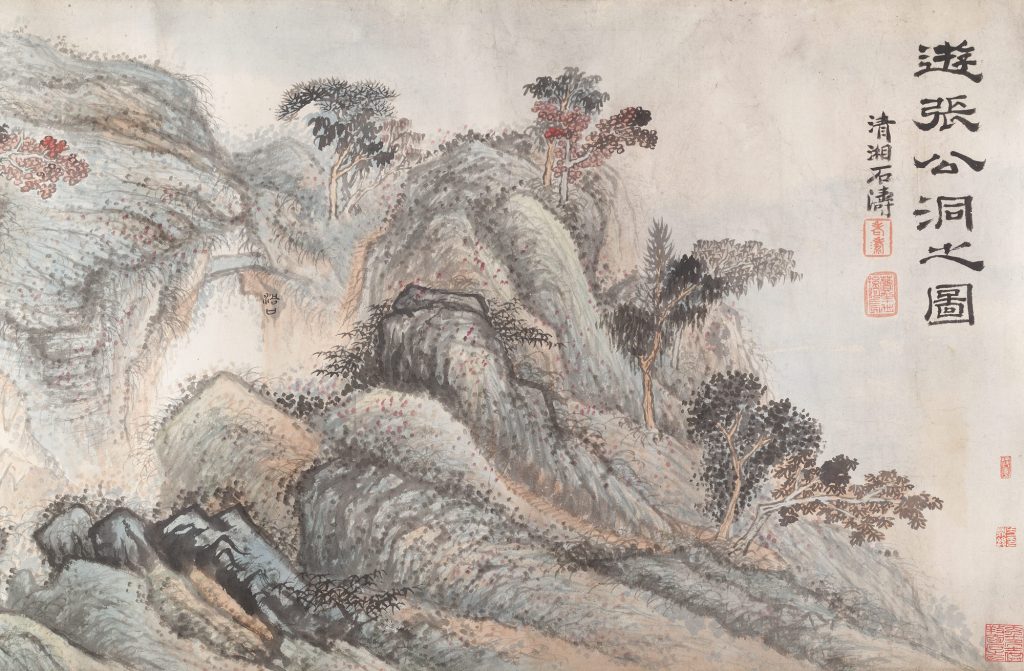With every bad situation there is a good side, but with every good situation there is a bad side.
Everyone has heard some variation of this cliché before, but where does this idea come from? It comes from an ancient Chinese philosophy that has influenced China since the sixth century BCE, namely, the belief system of Daoism.

The Chinese philosophy of Daoism is the “teaching of the way.” The Dao is the way in which things come together while constantly changing. This idea reflects an inherently Chinese belief that change is fundamental to life. The hexagrams are the correlative relationships that symbolize the patterns of change in Daoism. They are contradictory elements but are necessary for the flow of reality. This is where the concept of yin and yang comes from. Hexagrams are figures that are made up of six lines, with broken lines representing yin and the solid lines representing yang. Yin and yang is the principle of all things that exist, that all things are inseparable and contain contradictory opposites. Water/fire, earth/heaven, wind/thunder, hot/cold, are all examples of these inseparable opposites. One is not superior to the other, and an increase in one brings a decrease in the other. Harmony is achieved by complete balance between the two opposites.1

Daoism was a response to the disorder of the late Zhou Dynasty. Although it was a time of political distress, it led to people reflecting on roles of humans in society. Some wanted to reconstruct the political and social order of China, such as Confucianism, while others wanted to explore individual peace separate from society, such as Daoism.2
The Daodejing contains the most fundamental teachings of Daoism. The oldest texts from the Daodejing date back to the 4th Century B.C.E. It is where the concept of yin and yang comes from. It also teaches that humans should not tamper with the flow of reality, also known as wu-wei or “effortless action.” The Daodejing teaches that wu-wei should guide people’s lives. When something happens that may seem unfair, people should remember that the way of heaven or dao of tian never misses anything or leaves anything undone. In other words, everything happens for a reason and nothing happens incompletely.3

Laozi is credited with founding Daoism. He is veiled in mystery, since there is no solid record of Laozi ever existing. Some say he lived in sixth century B.C.E.; however, there is no record of a man named Laozi as the founder of Daoism. Laozi means “Old Master,” and he is believed to have written the Daodejing, but there is much debate about whether or not the Daodejing was written by one person or many. Regardless of all the speculation surrounding Laozi, he is still venerated as a philosopher by Confucians, and he was even worshiped as an imperial ancestor during the Tang Dynasty 618–907 C.E.4
Daoism influenced Chinese arts. Some of the oldest spiritual books received their influence from the pictures of Daoist temples. Daoist illustrations also influenced the desire to draw technical drawings, so it influenced a high level of botanical and mineralogical drawings. Calligraphy also has its influence from Daoism; Wang Xizhi is known as one of the greatest calligraphers of all time.5
Daoism focuses on ways of living that is separate from society. It teaches people to just let life happen, since there is a reason for everything that happens. Daoism influenced peoples’ thinking when it first emerged, and even now in modern society. Taiwan is where Daoism is still widely popular, and many temples have been restored to maintain the practice of the way.6
- Internet Encyclopedia of Philosophy, 2016, s.v. “Daoist Philosophy” by Ronnie Littlejohn ↵
- Jerry Bentley, Herbert Ziegler, and Heather Streets Salter, Traditions & Encounters: A Brief Global History, Volume 1, 3 edition (McGraw-Hill Higher Education, 2013), 1o2. ↵
- Internet Encyclopedia of Philosophy, 2016 s.v.”Daoist Philosophy” by Ronnie Littlejohn. ↵
- Encyclopedia Britannica, 2016 s.v. “Laozi, Chinese Daoist Philosopher ” by Roger T. Ames and Max Kaltenmark. ↵
- Encyclopedia Britannica, 2016, s.v. “Daoism – Influence” by Roger T. Ames, Anna K. Seidel, and Michel Strickmann. ↵
- Encyclopedia Britannica, 2016, s.v.”Daoism- Influence” by Ames, Seidel, and Strickmann ↵



32 comments
Regina De La Parra
I always like learning about ancient cultures and how they, combined with other aspects, can create fascinating religions just as Daoism. I am amazed by this article because of all the interesting facts it gives about this ancient religion like its creator might have not even existed. This is a good article because it successfully explains what Daoism is and how it much it has affected the lives of the Chinese. Great article Alyssa!
Fumei P.
I like the teaching that everything happens for a reason and nothing is incompletely. I think it’s interesting that they can’t really pinpoint who wrote these ideas or practices down. I’m curious myself, as to whether it was just a single person or a group of people that came up with these thoughts. This school of thought made an incredible influence especially since it was used to restore balance to China.
Olga Perez
The ancient religions have always fascinated me and I think this one is super interesting. I know I have always heard about yin and yang, but the actually meaning behind it was always a little patchy. This article really articulated what it means and the importance of it. I also thought that the part where the author elaborated about Laozi was interesting and something I had not heard about before this article.
Samuel Ruiz
I had once heard of Daoism but after reading this article, I learned far more than I knew before. I love that this article explains all components of Daoism, from yin and yang, to Daodejing, to the influence on Chinese arts, and the belief system of change and reality within Daoism. One aspect of Daoism that is explained in the article in which catches my attention, is the explanation of the belief that reality must not be changed. It is unthinkable to deal with a new direction of reality and especially difficult for modern society and politics to just allow change to happen without redirection.
Eduardo Foster
I have not heard of Daoism before the article! I have heard of the Yin and Yang but didn’t thought it was part of the Daoism. It is actually interesting the fact how Daoism influence the Chinese culture. I did not know the importance of Daoism have in the Chinese culture! Great article and keep it up with the good work!
Tyler Sleeter
Great article with lots of information. I knew almost nothing about Taoism before reading this article and I found it an interesting read. I like the central belief that change is always going to happen. It seems to me that many people do not like change and waste energy trying to keep it from happening. I had heard of yin and yang, but did not know it meant opposite forces. I find it interesting that Taoism was invented by Laozi even though there is no proof he ever lived, similar to Jesus and Christianity.
Mario Sosa
This article was really fascinating since I had no previous knowledge of Daoism. Prior to learning about Daoism, I would have assumed that the yin and yang concept came from Buddhism. What’s interesting to me is how different Daoism is compared to Confucianism. Confucianism has an natural instinct to do the right thing while Daoism’s main goal is to simply sit back and relax. Nicely done article, good job!
Andrew Rodriguez
Daoism to me has been one of the countless teachings in history. Shown again and again, the message it describes as balance with life. Has been implanted, in my opinion into many different cultures as well. The create of this has been done justice, of having no record of him even existing. I would have loved to hear about his life, and what made him come up with this ideology. He should be up there, as one of the greatest philosophers in our history. It’s a shame that we cannot give the credit, that this man deserves off the contributions of his thoughts.
Steven Clinton
Great article. I have always heard of Daoism but never really look into it. From looking over your article I know now it’s an interesting concept. It’s interesting how Laozi was accredited in the founding of Daoism, but there is no proof of Laozi existed! I think the idea of Laozi, makes the topic of Daoism all the more fascinating.
Ana Gonzalez
Good job! I thought this article was very informative and interesting. I had heard about things like the Yin and the Yang but I was not aware that they were part of the belief system of Daoism or that it stems from Chinese Philosophy. You did a good job explaining that Daoism trusts the life to run its course and it comes down to having harmony in you life. Thank you for your article, it was well-written!